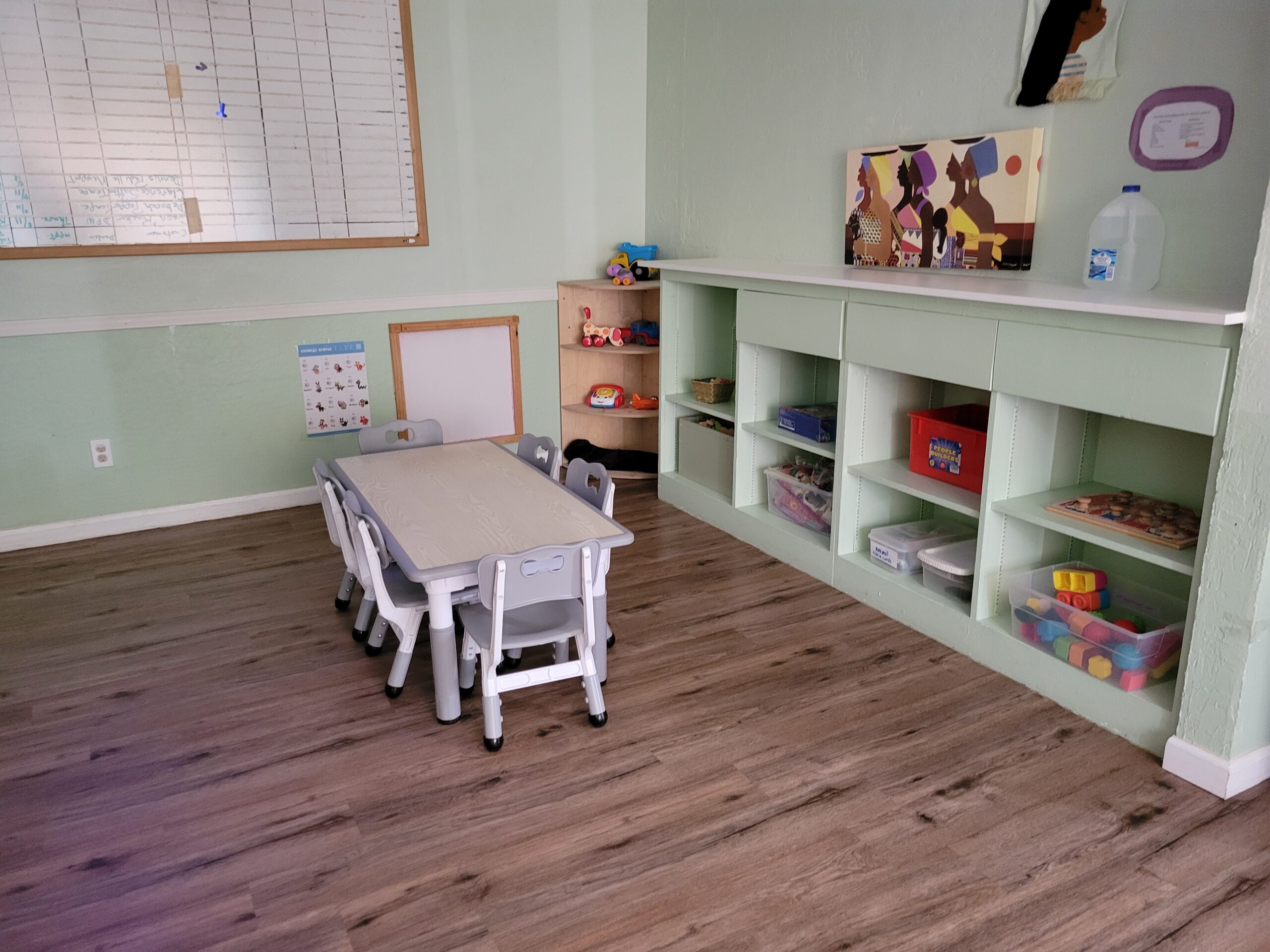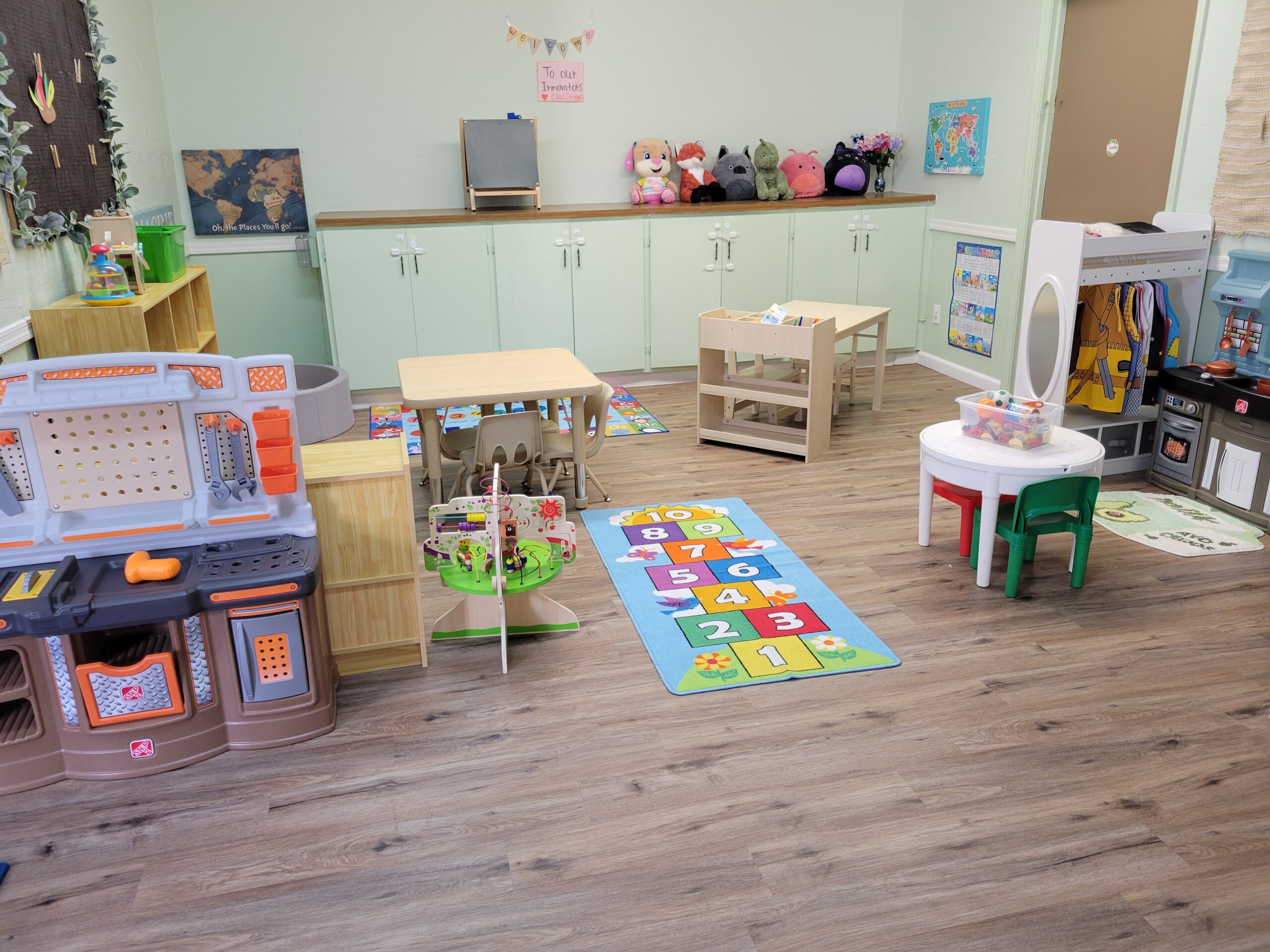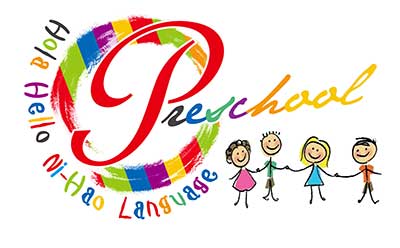In addition to the infant room, our toddler room will also have both the Spanish and Chinese teachers rotating through. At this developmental stage, children are just beginning to speak. One of the most interesting things about the development of language in children is that it is closely related to play. The time period when children begin producing their first words, usually around 12 to 13 months, is also the same time that symbolic play evolves.
It makes sense that these two things would occur at the same time because children must first learn to think symbolically in order to use language, since language is symbolic (a word represents an object, for example). So when you join your child in imaginative play, you are actually encouraging and helping to expand their new capacity to represent things mentally and symbolically.
Observing and understanding your child’s play skills can help you as a parent know what to expect next. For example, if your child hasn’t moved past banging a spoon on the table, you shouldn’t expect them to be using speech to communicate yet because, developmentally, the intent to communicate is still emerging.
There are lots of ways teachers can create opportunities that encourage kids to practice their communication skills. A favorite is putting things just out of reach. For example instead of handing your child a toy that you know he or she wants, let them see it slightly out of reach and wait for them to ask for it in some way.
All objects in our toddler classroom are arranged to exponentially optimize your child’s opportunities for learning and talking. 



